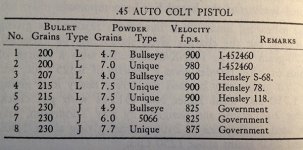If you peruse Mr. O'Heir's past posts and my responses to them, you will find he is a frequent poster of authoritatively stated "facts" that aren't so, mixed in with ones that are. I don't think he reads responses to his posts much, as I've directed him to articles disproving some of his erroneous "facts" only to see he repeats them later in other threads.
I am not a trained psychologist , but I have read enough to believe that what you are dealing with is a highly manipulative individual who enjoys, shall we say, kicking over the ant hill to watch the ants scurry. This reinforces his feelings of superiority as he sits back and watches people fall over themselves in refuting his bad information, and if someone actually follows his dangerous advice, and gets hurt, it just proves how superior he is to all the "human ants" on the web.
https://www.sociopathicstyle.com/psychopathic-traits/
Under his other name, Sunray, the good guys at Canadian Gun Nutz recognized him for what he is and have banned him. I think the smart people at the CMP web site have also banned him, for purposely giving out dangerous information.
Some things are not funny, you can have him back
http://www.canadiangunnutz.com/foru...ny-you-can-have-him-back?highlight=sunray+ban
Originally Posted by laker415
He is dedicated at providing terrible advice. I wonder if he thinks he knows it all or is purposely providing poor information. He drops some bad info in a thread and never seems to return to read everyone ripping apart his stupidity.
It's what's known as seagull commenting- flys in, drops a bunch of crap that gets everybody riled up, then flys off to crap on somebody else
If you notice, he gets his post count up with lots of inane posts. He really does not show any expertise in much of anything. But people confuse post count with expertise. When he drops his dangerous advice, new people will look at his post count and assume he is trust worthy. He always errors on the side of bad advice, down to just bad advice. I have seen this particularly with respect to slamfires and the dangers of old gunpowder. Having corrected him many times, only to read the same bad advice later on many websites, it becomes obvious that he is not mistaken, not confused, he knows what he is doing and is doing it deliberately. The guy wants to hurt people, or at least, manipulate them to scurry around picking up the crap he dumps.

